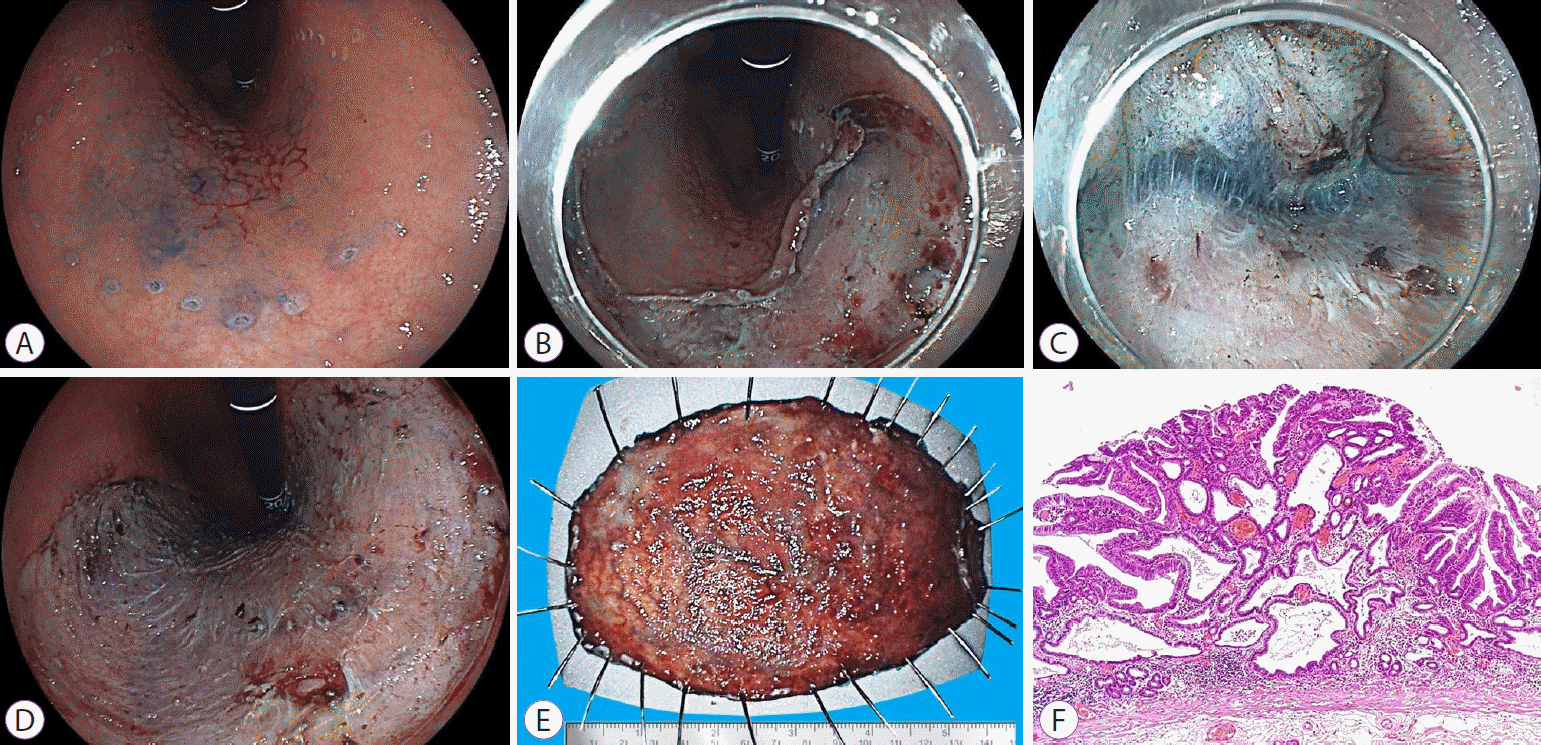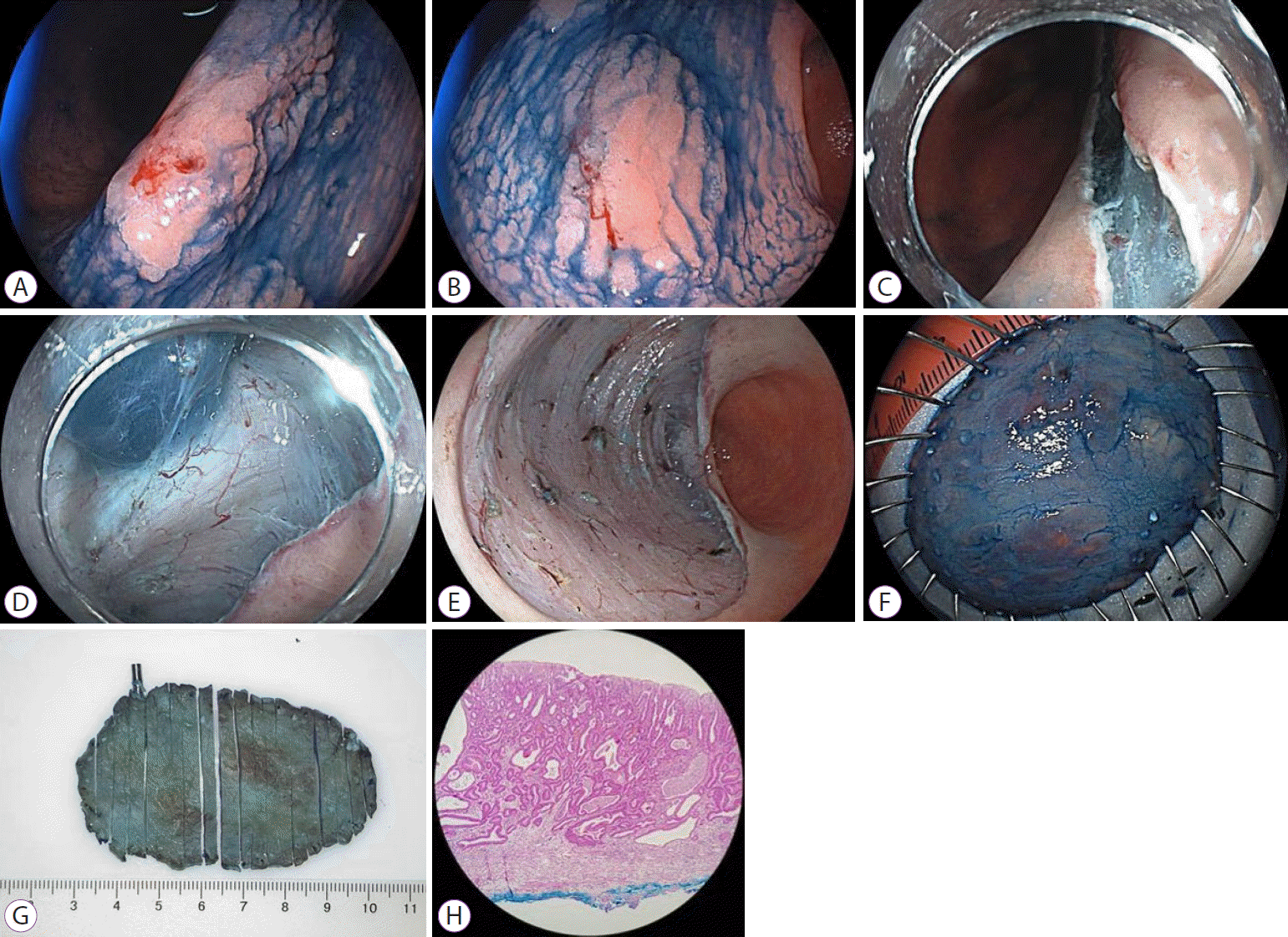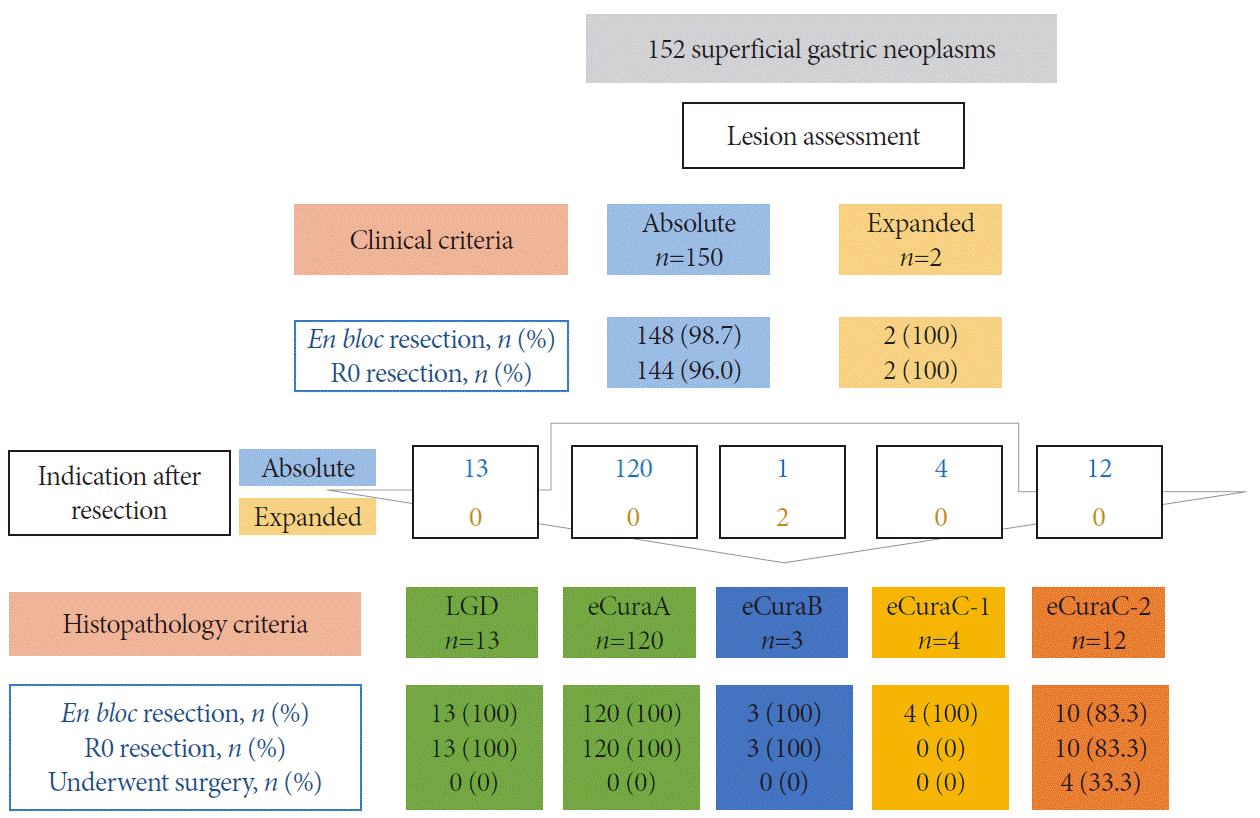1. Sung H, Ferlay J, Siegel RL, et al. Global cancer statistics 2020: GLOBOCAN estimates of incidence and mortality worldwide for 36 cancers in 185 countries. CA Cancer J Clin. 2021; 71:209–249.
2. Zafra-Tanaka JH, Tenorio-Mucha J, Villarreal-Zegarra D, Carrillo-Larco R, Bernabe-Ortiz A. Cancer-related mortality in Peru: trends from 2003 to 2016. PLoS One. 2020; 15:e0228867.
3. Suzuki H, Oda I, Abe S, et al. High rate of 5-year survival among patients with early gastric cancer undergoing curative endoscopic submucosal dissection. Gastric Cancer. 2016; 19:198–205.
4. Kim SG, Park CM, Lee NR, et al. Long-term clinical outcomes of endoscopic submucosal dissection in patients with early gastric cancer: a prospective multicenter cohort study. Gut Liver. 2018; 12:402–410.
5. Kosaka T, Endo M, Toya Y, et al. Long-term outcomes of endoscopic submucosal dissection for early gastric cancer: a single-center retrospective study. Dig Endosc. 2014; 26:183–191.
6. Choi MK, Kim GH, Park DY, et al. Long-term outcomes of endoscopic submucosal dissection for early gastric cancer: a single-center experience. Surg Endosc. 2013; 27:4250–4258.
7. Tanabe S, Ishido K, Matsumoto T, et al. Long-term outcomes of endoscopic submucosal dissection for early gastric cancer: a multicenter collaborative study. Gastric Cancer. 2017; 20:45–52.
8. Liu Q, Ding L, Qiu X, Meng F. Updated evaluation of endoscopic submucosal dissection versus surgery for early gastric cancer: a systematic review and meta-analysis. Int J Surg. 2020; 73:28–41.
9. Chaves DM, Maluf Filho F, de Moura EGH, et al. Endoscopic submucosal dissection for the treatment of early esophageal and gastric cancer-initial experience of a western center. Clinics (Sao Paulo). 2010; 65:377–382.
10. Donoso D A, Sharp A, Parra-Blanco A, et al. Endoscopic submucosal dissection in early gastric cancer: experience in 16 patients. Rev Med Chil. 2015; 143:1277–1285.
11. Emura F, Mejía J, Donneys A, et al. Therapeutic outcomes of endoscopic submucosal dissection of differentiated early gastric cancer in a Western endoscopy setting (with video). Gastrointest Endosc. 2015; 82:804–811.
12. Chirinos Vega JA, Vargas G, Alcántara C, Zapata J. Endoscopic submucosal dissection as treatment for early gastric cancer: experience at two centers in Lima, Peru. Rev Gastroenterol Mex (Engl Ed). 2018; 83:393–399.
13. Arantes V, Aliaga Ramos J, Pedrosa MS. Endoscopic submucosal dissection for superficial gastric neoplasias in two referral hospitals in Brazil: can the Japanese and South Korean results be equaled? Rev Gastroenterol Mex. 2021; 86:244–252.
14. Japanese Gastric Cancer Association. Japanese gastric cancer treatment guidelines 2018 (5th edition). Gastric Cancer. 2021; 24:1–21.
15. Japanese Gastric Cancer Association. Japanese classification of gastric carcinoma: 3rd English edition. Gastric Cancer. 2011; 14:101–112.
16. Participants in the Paris Workshop. The Paris endoscopic classification of superficial neoplastic lesions: esophagus, stomach, and colon: November 30 to December 1, 2002. Gastrointest Endosc. 2003; 58:S3–S43.
17. Palacios Salas F, Liza Baca E. Endoscopic prediction of tumor invasion depth in early gastric neoplasia: a prospective study in Peru. Rev Gastroenterol Peru. 2017; 37:120–128.
18. Hu B, El Hajj N, Sittler S, Lammert N, Barnes R, Meloni-Ehrig A. Gastric cancer: classification, histology and application of molecular pathology. J Gastrointest Oncol. 2012; 3:251–261.
19. Schlemper RJ, Riddell RH, Kato Y, et al. The Vienna classification of gastrointestinal epithelial neoplasia. Gut. 2000; 47:251–255.
20. Cotton PB, Eisen GM, Aabakken L, et al. A lexicon for endoscopic adverse events: report of an ASGE workshop. Gastrointest Endosc. 2010; 71:446–454.
21. Gotoda T, Kondo H, Ono H, et al. A new endoscopic mucosal resection procedure using an insulation-tipped electrosurgical knife for rectal flat lesions: report of two cases. Gastrointest Endosc. 1999; 50:560–563.
22. Oda I, Saito D, Tada M, et al. A multicenter retrospective study of endoscopic resection for early gastric cancer. Gastric Cancer. 2006; 9:262–270.
23. Goto A, Nishikawa J, Okamoto T, et al. Outcomes of endoscopic submucosal dissection for early gastric cancer and factors associated with incomplete resection. Hepatogastroenterology. 2013; 60:46–53.
24. Isomoto H, Ohnita K, Yamaguchi N, et al. Clinical outcomes of endoscopic submucosal dissection in elderly patients with early gastric cancer. Eur J Gastroenterol Hepatol. 2010; 22:311–317.
25. Chung IK, Lee JH, Lee SH, et al. Therapeutic outcomes in 1000 cases of endoscopic submucosal dissection for early gastric neoplasms: Korean ESD Study Group multicenter study. Gastrointest Endosc. 2009; 69:1228–1235.
26. Toyonaga T, Man-i M, East JE, et al. 1,635 Endoscopic submucosal dissection cases in the esophagus, stomach, and colorectum: complication rates and long-term outcomes. Surg Endosc. 2013; 27:1000–1008.
27. Zullo A, Manta R, De Francesco V, et al. Endoscopic submucosal dissection of gastric neoplastic lesions in Western countries: systematic review and meta-analysis. Eur J Gastroenterol Hepatol. 2021; 33:e1–e6.
28. Ngamruengphong S, Ferri L, Aihara H, et al. Efficacy of endoscopic submucosal dissection for superficial gastric neoplasia in a large cohort in North America. Clin Gastroenterol Hepatol. 2021; 19:1611–1619.e1.
29. Hasuike N, Ono H, Boku N, et al. A non-randomized confirmatory trial of an expanded indication for endoscopic submucosal dissection for intestinal-type gastric cancer (cT1a): the Japan Clinical Oncology Group study (JCOG0607). Gastric Cancer. 2018; 21:114–123.
30. Oda I, Suzuki H, Nonaka S, Yoshinaga S. Complications of gastric endoscopic submucosal dissection. Dig Endosc. 2013; 25(Suppl 1):71–78.
31. Hanaoka N, Uedo N, Ishihara R, et al. Clinical features and outcomes of delayed perforation after endoscopic submucosal dissection for early gastric cancer. Endoscopy. 2010; 42:1112–1115.
32. Castillo Contreras O, Maguiña Quispe J, Benites Goñi H, et al. Prevalence of Helicobacter pylori in symptomatic outpatients in red rebagliati (EsSalud) from 2010 to 2013, Lima, Peru. Rev Gastroenterol Peru. 2016; 36:49–55.






 PDF
PDF Citation
Citation Print
Print




 XML Download
XML Download